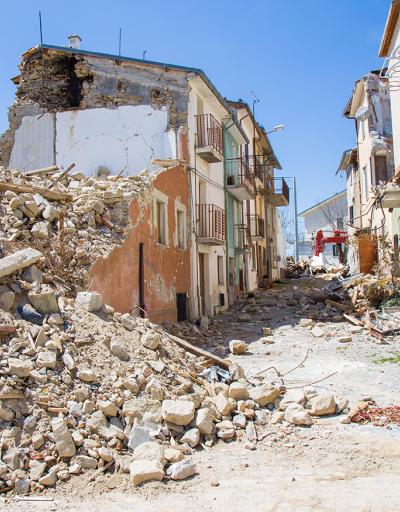
Environment and ecosystem-based disaster risk reduction
The world is facing increasingly complex climate-related challenges that are reducing our resilience to climate shocks and increasing our vulnerability to natural hazards. The frequency and intensity of climate-related hazards such as cyclones, flooding, and drought are rising, affecting millions of people each year.
Unplanned urban growth and nature loss exacerbate these challenges. Their impact is amplified by poorly implemented development strategies, unsustainable land-use practices such as deforestation, economic inequality, and lack of preparedness. By destroying forests and wetlands, we are eroding the environment's capacity to withstand hazards and eliminating the defenses that nature has built over time. This is turn is increasing people’s exposure to hazards and their impacts, particularly the most vulnerable communities.
Nature-based solutions
Nature-based solutions are solutions inspired by nature, that use or mimic natural processes to reduce risks of natural hazards while providing environmental, social and economic benefits. While the term “nature-based solutions” (NBS) is relatively new, UNESCO recognizes that managing natural resources and improving the flow of ecosystem services for disaster risk reduction is not. For instance, indigenous populations have long used fire as a preventative measure for catastrophic wildfires, as well as to increase ecological diversity, among other applications.

Nature-based solutions for climate resilience are integrative strategies that reduce climate risks while enhancing biodiversity and ecosystem services. These solutions restore the defenses of natural systems whilst increasing the resilience of populations. Such examples include protecting and restoring mangroves, urban green spaces, rivers and floodplains, reef ecosystems, as well as wetlands.
The increasing recognition that nature-based solutions provide tangible environmental, social, and economic benefits for disaster risk reduction allows for a new understanding of what can be done to mitigate risks from natural hazards. In the past, projects for urban flood risk management typically focused on engineered drains and culverts. Now, there is a shift towards projects that rely solely on nature as a solution to natural hazards (green solutions) or that combine traditional drainage infrastructure with bioretention areas, parks, or wetlands which can function as flood storage areas (grey solutions).

An ecosystem-based approach
There is increasing scientific and operational evidence that shows nature-based solutions are effective and cost-efficient. However, decisions about which NBS to implement must always be context- and site-specific. With larger populations at risk of natural hazards, UNESCO uses a variety of knowledge and solutions to build resilience in communities around the world.
UNESCO approaches ecosystem-based solutions from multiple angles. Within the landscape, there are various features, such as forests, mangroves, sand dunes, sea grasses, and rivers, that mitigate hazards by their presence and function. UNESCO believes that protecting ecosystems is one way to ensure their functionality and ability to provide services, such as acting as natural buffers and reducing the risk of ecosystem loss and degradation. Additionally, UNESCO utilizes other ecosystem-based approaches for disaster risk reduction, including the restoration and sustainable management of ecosystems and the environment. Finally, UNESCO employs 'grey' solutions that combine natural components with built infrastructures, such as using permeable concrete to create an artificial lake that can contain excess water during a flood.
Nature-based solutions in marine environments

Nature-based solutions in coastal areas

Nature-based solutions inland








